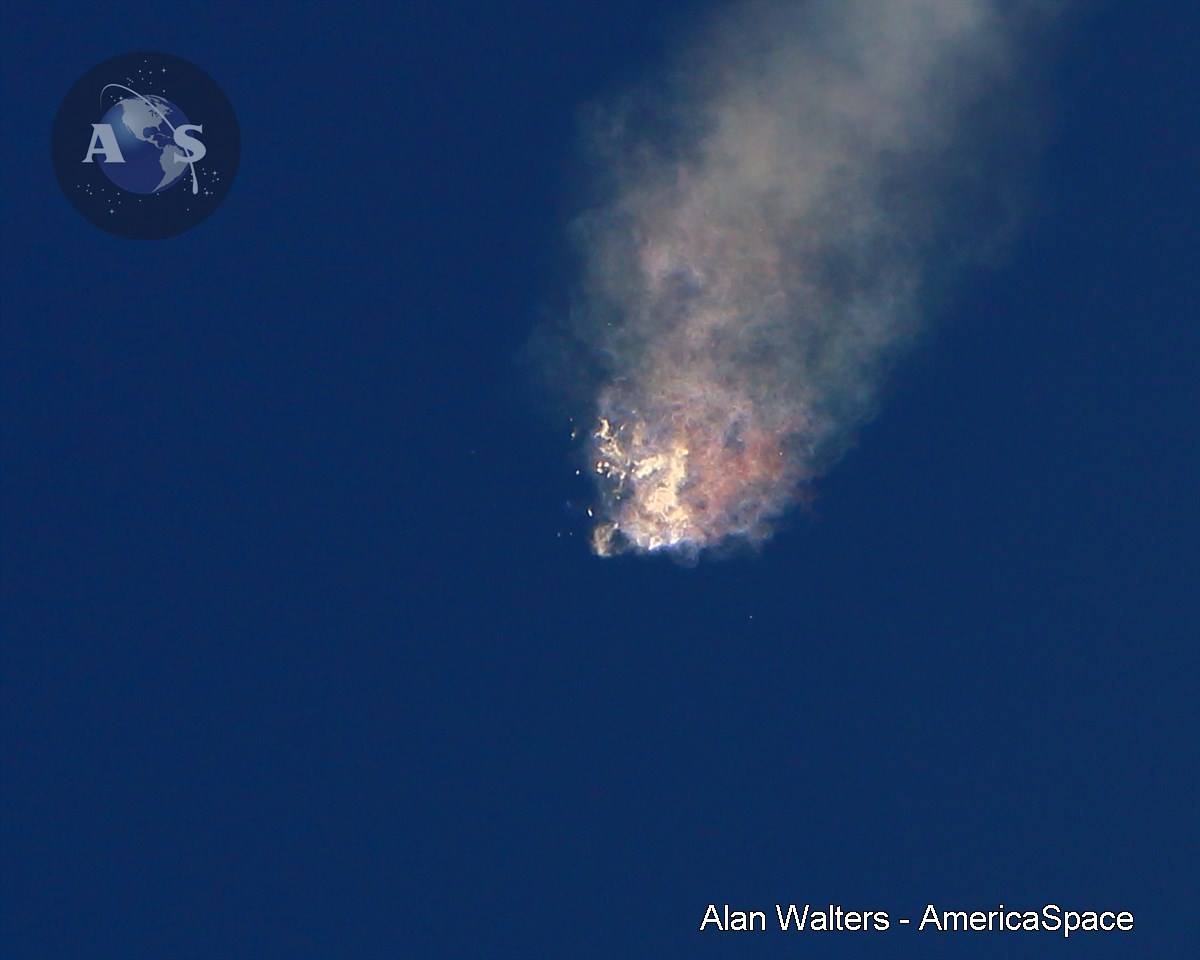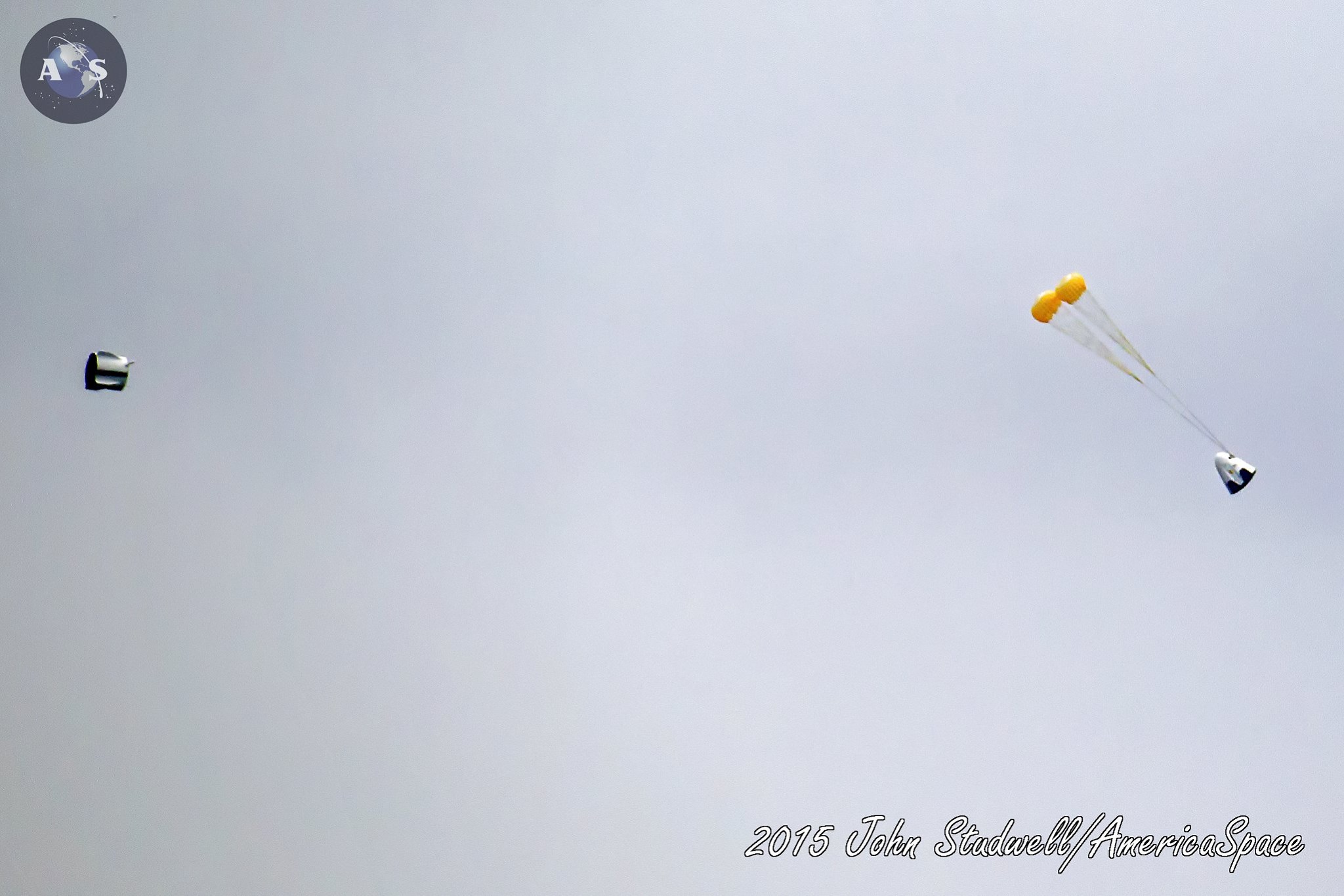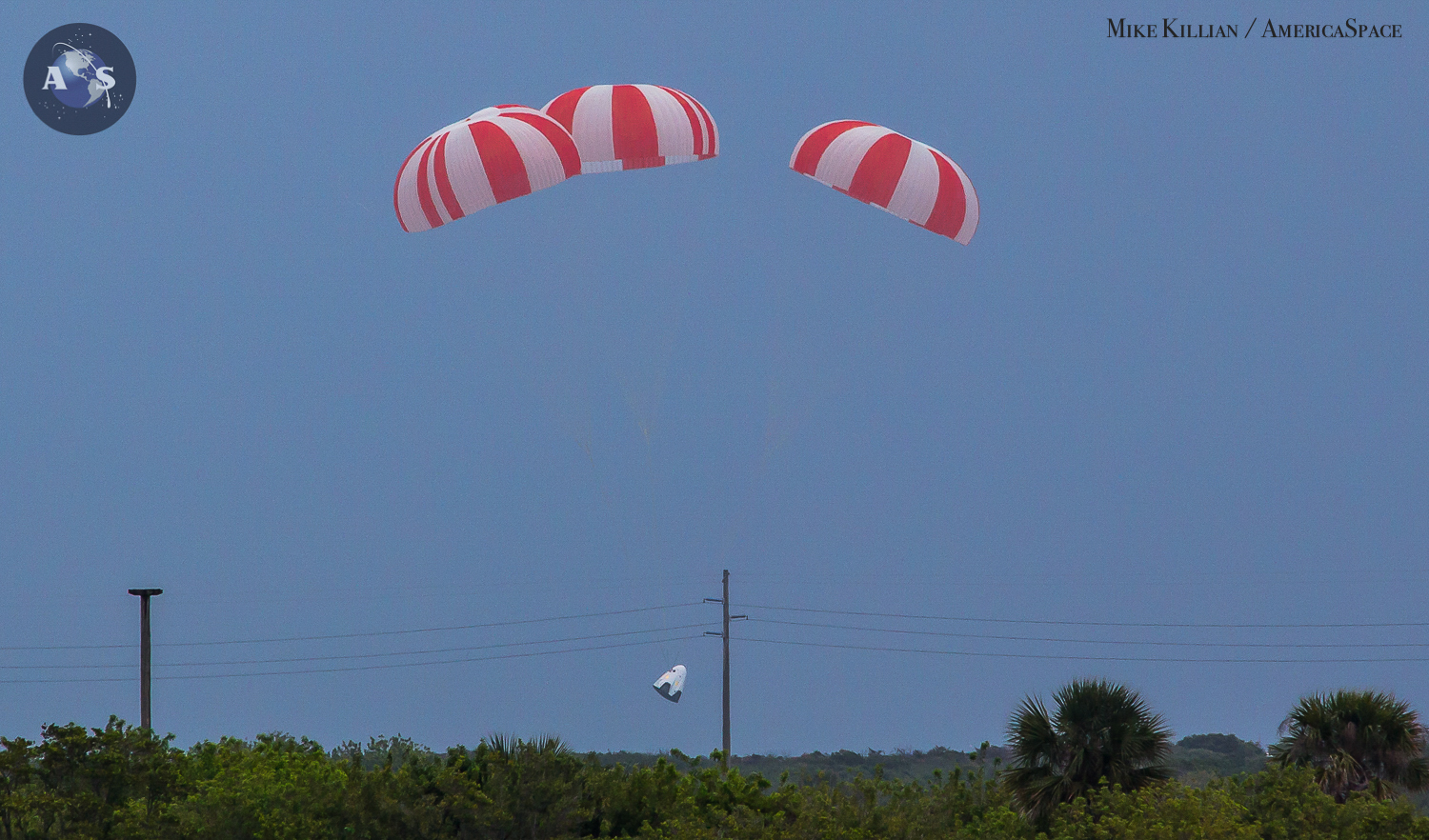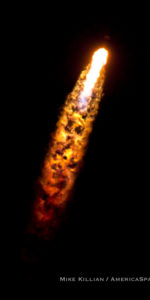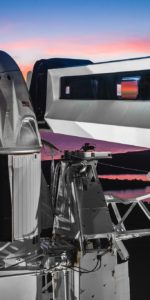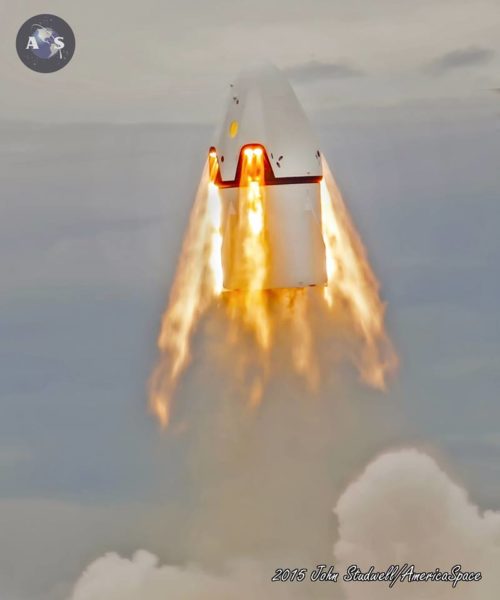
The Falcon 9 rocket which launched last night’s SpaceX mission performed beautifully on its third flight, delivering Indonesia’s PSN-6 satellite “Nusantara Satu” to orbit, along with a U.S. Air Force Research Laboratory (AFRL) microsat and – most notably – deploying a moonlander developed by Israel’s SpaceIL organization (read our full story HERE).
It previously launched ten Iridium NEXT global mobile communications satellites in July 2018, and the heavyweight SAOCOM-1A Earth-observation payload for Argentina last October, but its next and final mission will see its destruction.
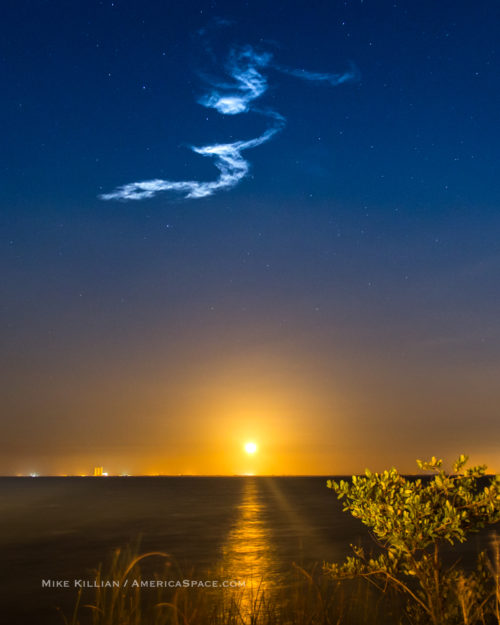
Last night’s launch was quite a sight under a beautifully clear sky (shame SpaceX missed the moonrise by only a few minutes), and having made a successful landing, SpaceX’s leader Elon Musk has confirmed on Twitter what the rocket’s final responsibility will be.
Blowing up mid-air, on purpose.
The cool factor is off the charts (just ask any photographer), but the reason behind the mission is of course life and death.
When astronauts begin launching to space aboard Crew Dragons and Falcon 9s, they will need an abort capability, not only to quickly escape an incident on the launch pad, but to escape an exploding rocket mid-air during launch and ascent too.
Such a need is absolutely critical, and required by NASA, and was proven why in a scary incident a few months ago when the crew of Soyuz MS-10 experienced a failure with their rocket, forcing them into a dangerous high-G ballistic descent back to Earth.
Fortunately they survived, but things easily could have turned out the opposite. Even a proven system like Soyuz can’t escape the inevitable. Things will go wrong, and the upcoming Crew Dragon Ascent Abort Test will ensure those crews too, can safely escape an in-flight emergency.
Additionally, SpaceX has lost two missions to failing rockets in recent years; one on the launch pad (AMOS-6) and one on launch – and the one during launch was a Cargo Dragon mission for NASA (CRS-7). And while both NASA and SpaceX state the issues which caused those accidents are resolved, it does not change the fact that those events are exactly why an abort capability is needed for crews to begin with.
SpaceX insists that if a crew WAS onboard, the Dragon would have aborted them safely.
So the rocket (designated B1048) will be employed a fourth and final time – launching Crew Dragon, then blowing to pieces under supersonic forces off the coast of Cape Canaveral to prove the spacecraft & crew can escape safely.
The flight test is currently tracking towards launch no earlier than April, according to Musk.
But first, SpaceX needs to launch the first uncrewed orbital flight test of Crew Dragon, designated ‘Demo-1’ (DM-1), which is currently scheduled to launch no-earlier-than March 2 from Kennedy Space Center pad 39A. Because the same Crew Dragon will be used to conduct the Ascent Abort Test off the same launch pad.
“Testing the actual flight design always results in higher fidelity data and ultimately reduces risk for later crew flights,” said Bill Gerstenmaier, associate administrator of the NASA’s human spaceflight programs. “This supports a philosophy of testing as you fly, which our experience has shown to be a good strategy for development and complements well the earlier system information gained from the pad abort test.”
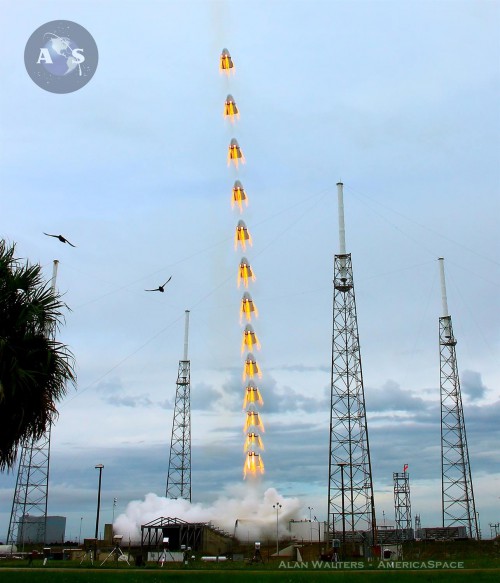
Follow our LAUNCH TRACKER for updates & LIVE COVERAGE of the launch!
The company already conducted a Pad Abort Test in 2015, which launched from SLC-40 off a specially made truss to simulate the spacecraft atop a Falcon-9 rocket. The 21,000-lb prototype took flight quickly under 120,000 lbs of axial thrust from its eight SuperDraco engines, ascending 3,500 ft in six seconds before jettisoning its trunk and deploying a pair of drogue chutes, followed by a trio of main parachutes and splashdown less than a mile offshore.
However, a recent Reuters story citing a report by NASA’s safety advisory panel brings to light major concerns still pending before NASA will fly their crews on Dragons and Falcons (or Boeing’s Starliners).
How any of those issues will be addressed in the abort test, who knows, as SpaceX is always very tight-lipped about their ops, but as of now NASA and SpaceX are marching towards the first crewed Dragon flight by end of 2019 with NASA astronauts Bob Behnken and Doug Hurley, and the upcoming flight tests will pave the way.
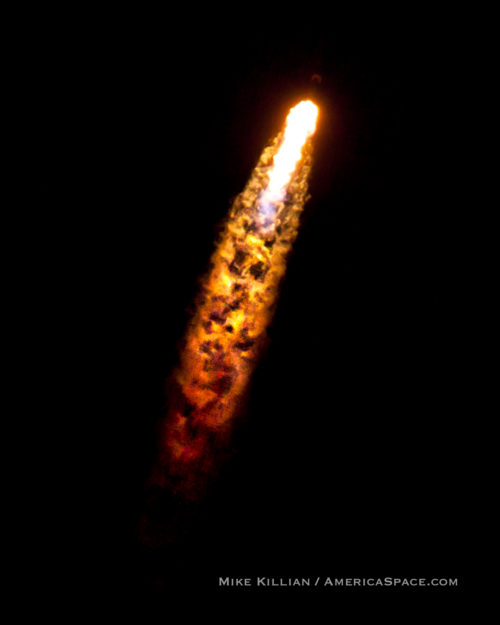
Below are some details about the upcoming Ascent Abort Test.
The following is from the FAA’s “Draft Environmental Assessment for Issuing SpaceX a Launch License for an In-flight Dragon Abort Test”, issued in November 2018:
“The abort test would involve observation, photography, and debris management associated with the breakup of the Falcon 9 first and second stages.
The launch scenario where an abort is initiated during the ascent trajectory at the maximum dynamic pressure (known as max Q) is a design driver for the launch abort system. It dictates the highest thrust and minimum relative acceleration required between Falcon 9 and the aborting Dragon. As the in‐flight abort would occur during the first stage portion of the launch trajectory, the second stage of Falcon 9 would be simplified
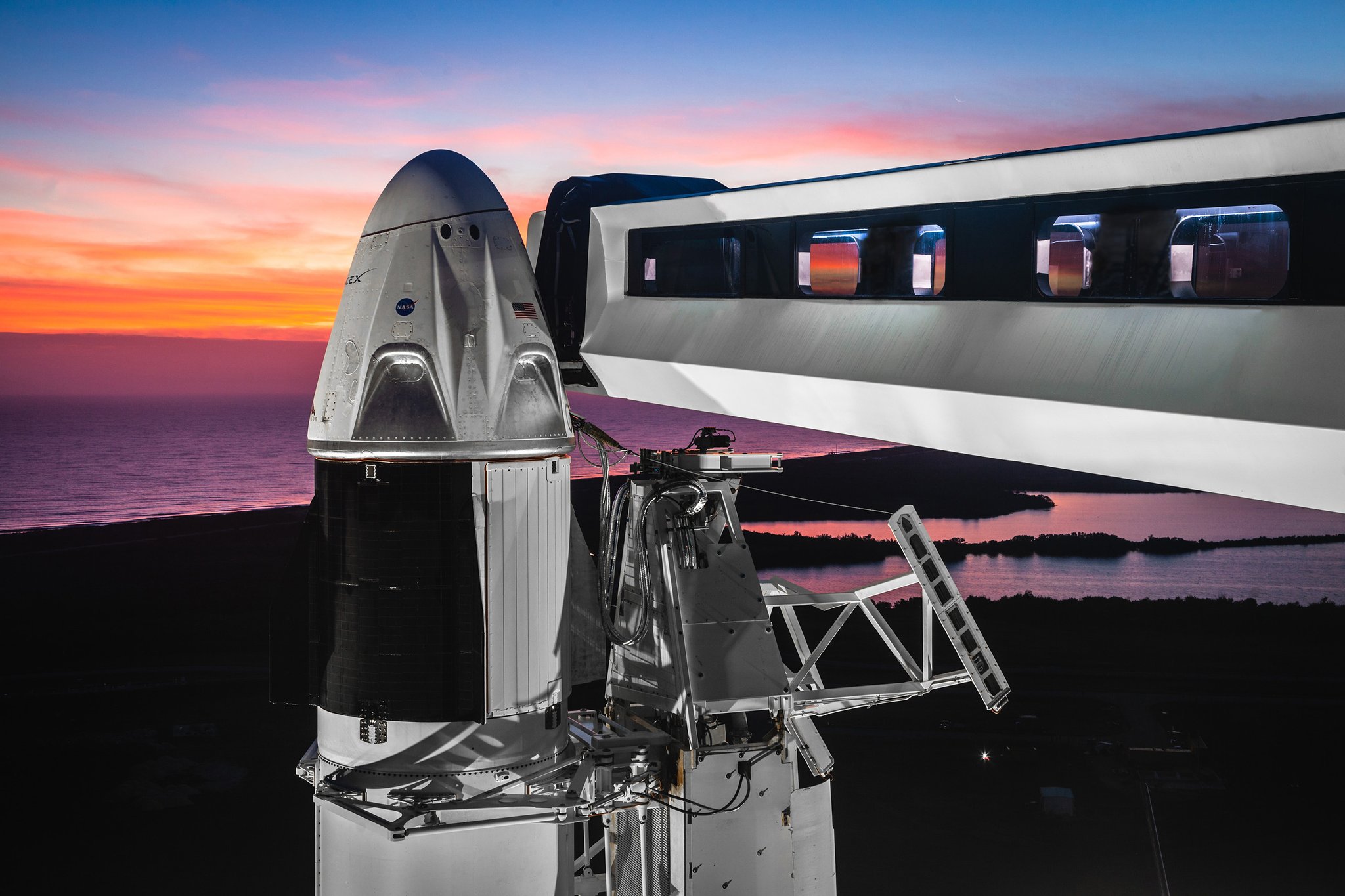
The abort test would start with a nominal launch countdown and release at T-0. The Falcon 9 with the Dragon attached would follow a standard ISS trajectory with the exception of launch azimuth to approximately Mach 1. The Falcon 9 would be configured to shut down and terminate thrust, targeting the abort test shutdown condition (simulating a loss of thrust scenario).
Dragon would then autonomously detect and issue an abort command, which would initiate the nominal startup sequence of Dragon’s SuperDraco engine system. Concurrently, Falcon 9 would receive a command from Dragon to terminate thrust on the nine first stage Merlin 1D (M1D) engines. Dragon would then separate from Falcon 9 at the interface between the trunk and the second stage, with a frangible nut system. Under these conditions, the Falcon 9 vehicle would become uncontrollable and would break apart. SpaceX would not attempt first stage booster flyback to KSC, CCAFS, or a droneship, nor would they attempt to fly the booster to orbit.
Dragon would fly until SuperDraco burnout and then coast until reaching apogee, at which point the trunk would be jettisoned. Draco thrusters would be used to reorient Dragon to entry attitude. Dragon would descend back toward Earth and initiate the drogue parachute deployment sequence at approximately 6 miles altitude and main parachute deployment at approximately 1 mile altitude.
Dragon recovery operations would be very similar to actions for normal Dragon reentry and recovery, although Dragon recovery during the abort test would occur approximately 9–42 miles from shore, and normal Dragon recovery is approximately 200 miles offshore.
The recovery vessel would recover all parachutes deployed by Dragon, as possible, including the two drogue and four main parachutes. Recovery of the drogue parachute assembly would be attempted if the recovery team can get a visual fix on the splashdown location.
However, because the drogue parachute assembly is deployed at a high altitude, it is difficult to locate. In addition, because of the size of the assembly and the density of the material, the drogue parachute assembly becomes saturated within approximately one minute of splashing down and begins to sink. This makes recovering the drogue parachute assembly difficult and unlikely.
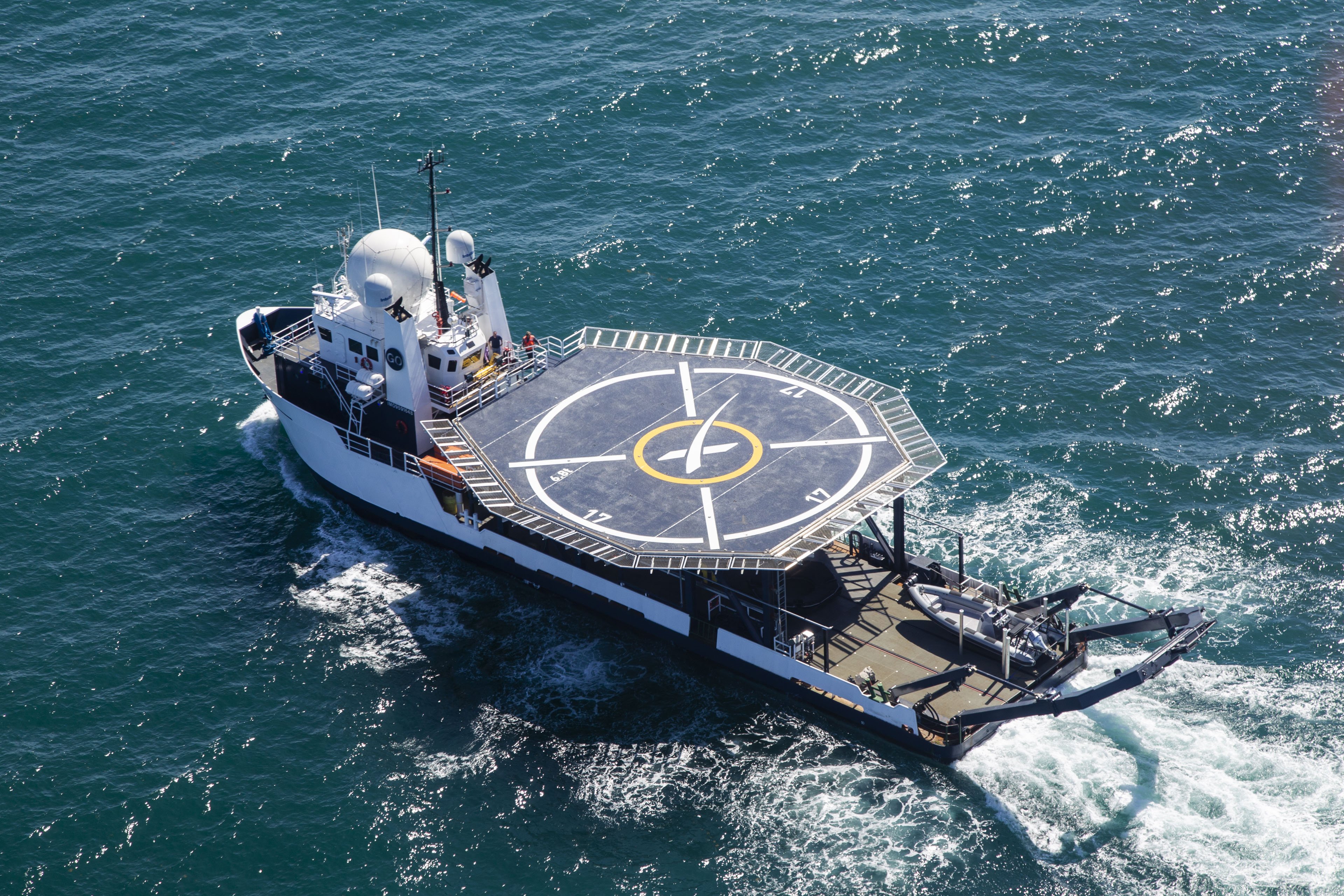
The Dragon test vehicle is intended to represent the final flight configuration of Dragon-2. Systems, subsystems, and components critical to the success of in-flight abort would be in the final configuration. Non-critical systems would either be eliminated or simplified to reduce the complexity of the ground refurbishment process to conduct the abort test.
Dragon would contain approximately 5,650 pounds of hypergolic propellant, including approximately 3,500 pounds of dinitrogen tetroxide (NTO) and 2,150 pounds of monomethylhydrazine (MMH). Dragon would contain approximately 2,400 pounds of residual propellant after the abort test.
The booster would be a standard Falcon 9 first stage and configured in an expendable configuration for the abort test. Landing legs and grid fins would be removed.
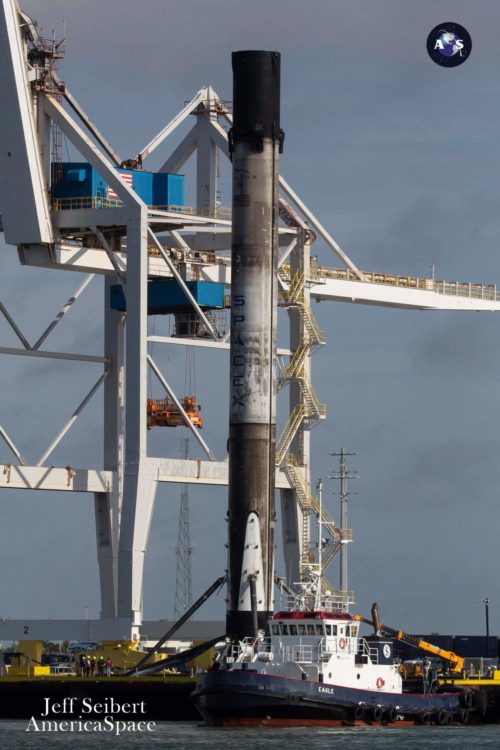
No booster recovery burns would be attempted. As such, a full triethylaluminum-triethylborane (TEA-TEB) mixture used as a first and second stage ignitor would not be used. The booster would be capable of flying a mission profile that allows for the target abort velocity to be achieved.
The booster would include nine M1D engines and be configured to perform an ascent abort shutdown. Each engine is propelled by liquid oxygen (LOX) and rocket fuel (RP-1; highly refined form of kerosene) and produces 190,000 pounds of thrust at sea level (for a total of 1.71 million pounds of thrust from all nine engines). The booster would carry the standard set of flight instrumentation.
The second stage would be a standard Falcon 9 second stage, with the exception of the M1D vacuum engine. The components essential to propellant loading operations would be carried, but the thrust chamber, turbopump, thrust vector control actuators, and other components required for performing second stage burns, would be omitted, as the mission concludes part-way through the first stage ascent burn. Propellant loading would follow standard loading operations for the second stage.
During the initial flight of the Falcon 9 with the Dragon attached, the flight track would be normal. The separation of Dragon from Falcon 9 would occur approximately between 83 and 100 seconds after launch. Dragon and the trunk would separate from the second stage and continue to coast to its apogee, eventually dropping the trunk and deploying the drogue parachutes.
At the point where Dragon and the trunk separate, the first and second stage would become unstable and break up approximately 2–4 miles down range from the shore. After the main chutes deploy, Dragon would drift approximately 3 miles and land approximately 9–42 miles from shore.”
Only after both flight tests are complete, and once everything is to NASA’s satisfaction, will a GO be given for SpaceX to fly the first Dragon Riders to the International Space Station.
.
.
FOLLOW AmericaSpace on Facebook and Twitter!
.
.




